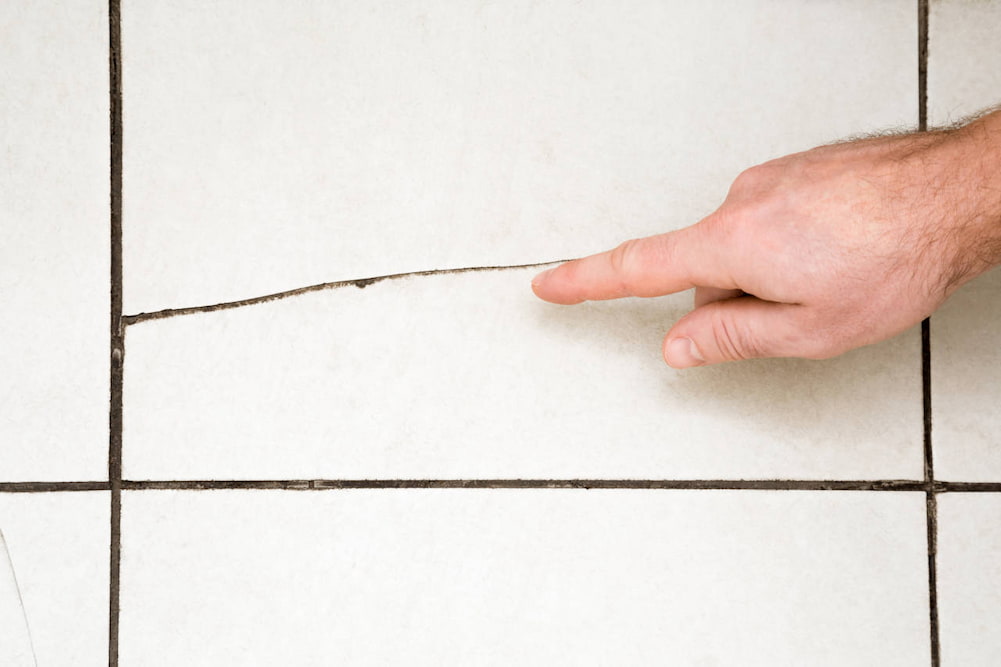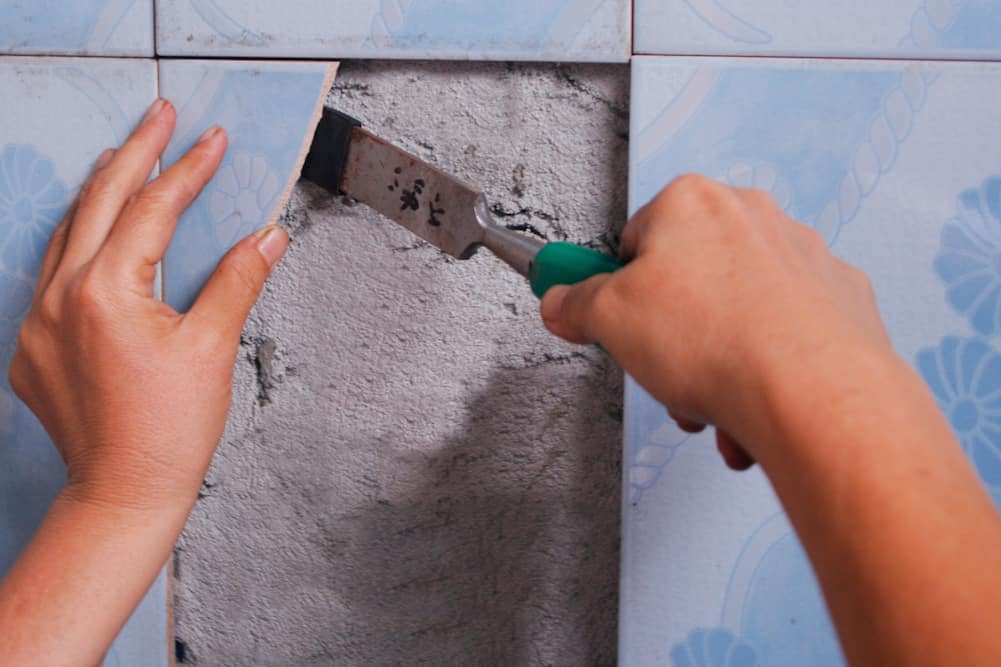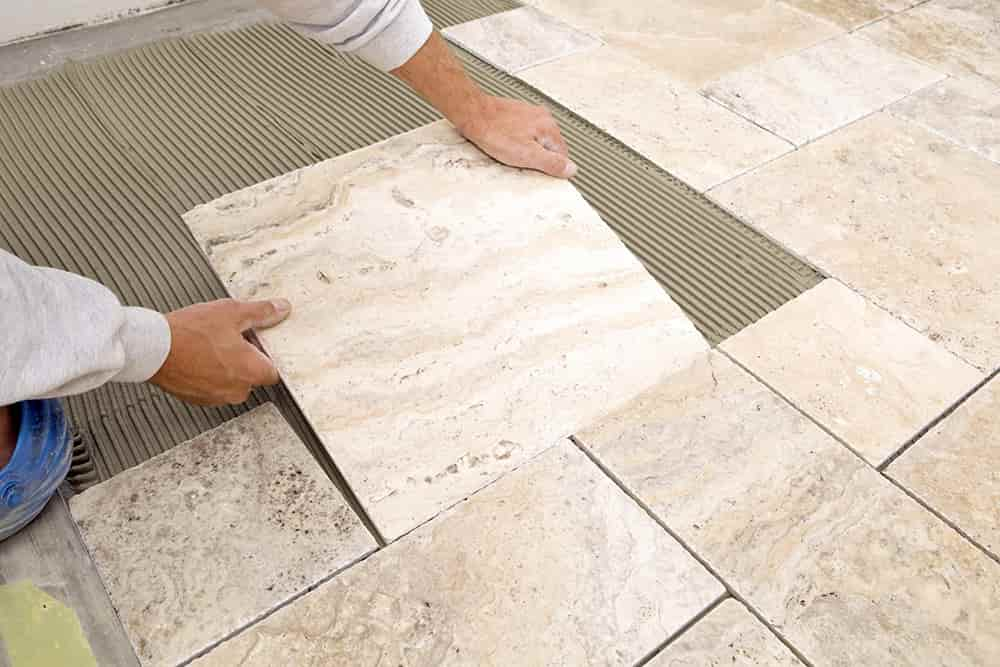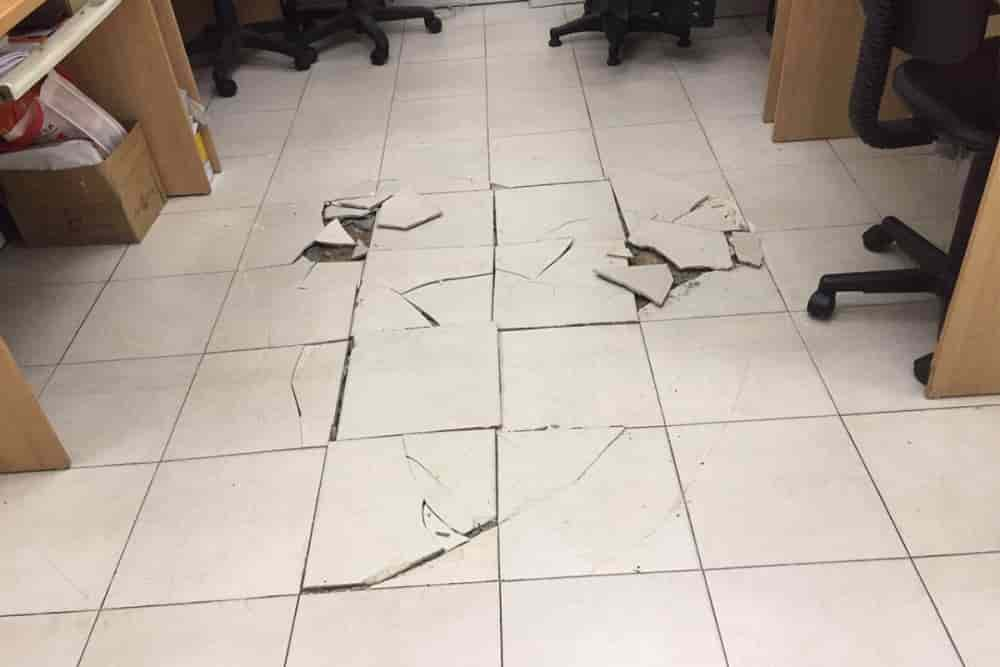Tiles offer a robust, long-lasting, and practical solution for the floor and wall throughout the house if they are laid out correctly. Tiles can also look nice with their surface. This, however, does not imply that there are not any problems associated with tiles in new house. The tiles on your floor is cracking now and again, and there are several potential causes for this to occur.
If this sounds familiar to you and you are struggling with one or more cracked tiles, we are here to help by providing a solution to the crucial question, “My tiles are cracking, what should I do next?”

If this sounds familiar to you and you are struggling with cracked tiles, we are here to help by providing a solution to this question. Join us as we investigate some of the factors that contribute to tile cracking in further detail and talk about some of the potential treatments.
Cracked tiles are usually an indication of more serious issues, the most frequent cause of which is incorrect installation. However, it is also possible that this was caused by sudden shifts in temperature, cracks in the substrate (the surface on which the tile is placed), an excessive amount of weight being carried, or even something as simple as a heavy object being dumped on them.
Before you can move on to knowing how to fix the broken tiles, you will first need to figure out what caused the cracks in the tiles. The following is more information regarding some of the most common reasons why tiles in residential properties crack:
If you want your tiles to function as effectively as they possibly can, it is essential to set them in the correct manner. In the event that this does not occur, you can run into a number of issues, such as broken tiles. The following are examples of costly errors that can occur during tile installation:
Using an incorrect technique to apply adhesive on the back of the tile: It is important to apply adhesive while securing tiles. Any openings or cavities in the tile have the potential to compromise its structural integrity, which will eventually result in the formation of cracks.
Unsuitable adhesion: Tiles need to be securely connected to the surface using a flexible adhesive that allows for tiny movements between the hard tiles and the substrate without compromising the tile’s durability. The application of tiles can result in cracked tiles if the appropriate grout or cement mixture is not used, or if a flexible membrane is not utilized. Both of these errors can occur.

Even while porcelain and ceramic tiles are both quite durable, they are nevertheless susceptible to breaking if they are subjected to severe impacts, such as when a large object is dumped on them. This is especially true if there are additional issues with the installation of the tiles.
In general, tiles are designed to withstand heavy weights; however, this does not mean that every tile may be used in this manner. For instance, if you were to place floor tiles on walls, the resulting surface might not be robust enough to hold heavy appliances like a refrigerator or washing machine for extended periods of time.
In the case of flooring, in particular, a fractured surface underneath the tiles might lead to the cracking of one or even several tiles on the floor’s surface. This could be the result of minute motions, such as the expansion and contraction of wood or concrete, or it could be the consequence of an installation that did not include a screed or a flexible membrane that expands with the movement of the substrate.
Large rooms that have concrete floors sometimes have control joints installed in order to accommodate the flooring material’s propensity to expand and contract. Fractures may appear if the tiling over these isolated parts is done incorrectly or if there is no flexible membrane used.
There may not be a considerable difference in temperature inside your home, and if there isn’t, it shouldn’t have a big impact on the tiles’ capacity to withstand wear and tear. However, tiles that aren’t intended to be used outside and don’t have frost-proofing properties are more likely to shatter when subjected to extreme temperature changes.
Tiles come in a wide variety of styles and designs, and some of those styles are not ideal for certain applications. Using tiles designed for interior use outside or installing floor tiles on walls may increase the likelihood that your tiles will break over time. This is something that we have already mentioned.

Tiles break because they are subjected to excessive stress, which causes the material to give way and fracture. This is the most straightforward explanation for why tiles crack. Depending on the amount of force that is exerted on the tile, these fractures may be relatively harmless hairline cracks or they may be more severe breaking.
Because they are manufactured from hard ceramic or porcelain that is subjected to enormous amounts of heat and pressure during the production process, tiles are well-equipped to handle strong bearing loads, foot traffic, dramatic temperature variations, exposure to moisture, and not to mention their fair share of impacts. This is because tiles are made from a material that can withstand impacts. Problems typically develop when people’s resilience and toughness as individuals are compromised by forces from the outside.
Even if you don’t have a complete understanding of the science involved in tile production and installation, you don’t need a degree in physics to recognize that any material will eventually break when put under strain. It doesn’t need a physics degree to recognize this fact. This is precisely what takes occurring when working with tiles.
Because of their rigid format, which means there is little to no give in them once they are installed, tiles are dependent on their surrounding environment to sustain them and make sure they stay in place and are intact. This is because tiles have little to no give in them once they have been installed.
If the surface the tiles are laid on is unstable or cracked, for example, the tiles will be dragged in two different directions, causing stress to be applied to them in places that are orthogonal to one another. Because of this, the surface of the tile has a distinct split in it.

In a similar vein, if they are subjected to pressure from heavy loads but are not the tile that is best suited for this use, it won’t be long before the tile begins to crack under the weight of the stress it is experiencing. This is far more likely to occur if the tiles are not installed in the correct manner and if there are gaps in the adhesive layer that is located below the tile surface.
It doesn’t take a genius to figure out that dropping something heavy, like a casserole pot or heavy-bottomed saucepan from a height can put strain and stress on a small area of the tile, which can lead to cracks and breaking of the tile. This is something that can happen even if the pot or saucepan isn’t particularly heavy.
It is now time to examine how and why tiles break, as well as what can be done to repair them. Also included in this discussion is what causes tiles to break. The majority of the time, tile cracks can be repaired without the need for an expensive remodel to be carried out.
If there are only very little cracks, such as hairline cracks, the tile surface can be repaired with an epoxy filler. If there are cracks that are more obvious and of greater size, it is possible that the entire tile may need to be removed and replaced.
We will describe in detail how you can execute these tile crack repairs, which are a simple and cost-effective alternative to retiling the entire space. These repairs are a good option to consider if you have cracked tiles in your flooring.

It is essential to repair any tile fractures as quickly as possible, despite the fact that many of these gaps go unnoticed. If you don’t, then dirt, moisture, and the natural wear and tear of the item may cause more damage sooner, which may result in a more significant problem in the future.
Repairing extremely fine cracks, such as hairline fractures, is a relatively simple process provided the necessary tools are used. For this method, you will need paint that is the same color as your tile as well as a tiny quantity of clear epoxy, which is a type of adhesive that is specifically designed to bond things together.
In the event that there is a larger crack or a shattered tile, the method described above will not be successful. Taking out the tile and replacing it with a spare tile that is an exact match in terms of its design, color, and dimensions is your best alternative. If you don’t have any spare tiles, you’ll need to place an order for some new ones. Even within batches of the same type of tile, there might be variations in appearance; for example, the original tiles might not have the same hue or shine.










Your comment submitted.